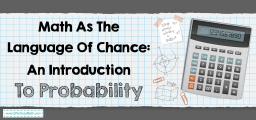How to Rationalize Radical Expressions? (+FREE Worksheet!)

As you may know, radical expressions cannot be in the denominator, so in this article, we will teach you how to get rid of them by rationalizing radical expressions.
Related Topics
- How to Add and Subtract Radical Expressions
- How to Multiply Radical Expressions
- How to Solve Radical Equations
- How to Simplify Radical Expressions
- How to Find Domain and Range of Radical Functions
A step-by-step guide to Rationalizing Radical Expressions
- Radical expressions cannot be in the denominator. (number in the bottom)
- To get rid of the radicals in the denominator, multiply both numerator and denominator by the radical in the denominator.
- If there is a radical and another integer in the denominator, multiply both numerator and denominator by the conjugate of the denominator.
- The conjugate of \((a+b)\) is \((a-b)\) and vice versa.
Examples
Rationalizing Radical Expressions – Example 1:
Simplify. \(\frac{5}{\sqrt{6}- 4}\)
Solution:
Multiply by the conjugate: \(\frac{\sqrt{6}+ 4}{\sqrt{6}+ 4 } →\frac{5}{\sqrt{6}- 4 }×\frac{\sqrt{6}+ 4}{\sqrt{6}+ 4 }\)
\( (\sqrt{6}- 4)(\sqrt{6}+ 4)=-10\) then: \(\frac{5}{\sqrt{6}- 4 }×\frac{\sqrt{6}+ 4}{\sqrt{6}+ 4 }=\frac{5(\sqrt{6}+ 4)}{-10 }\)
Use the fraction rule: \(\frac{a}{-b}=-\frac{a}{b}→\frac{5(\sqrt{6}+ 4)}{-10 }=-\frac{5(\sqrt{6}+ 4)}{10 }=-\frac{1}{2 }(\sqrt{6}+ 4)\)
Rationalizing Radical Expressions – Example 2:
Simplify. \(\frac{2}{\sqrt{3}- 1 }\)
Solution:
Multiply by the conjugate: \(\frac{\sqrt{3}+1}{\sqrt{3}+1}\) → \(\frac{2}{\sqrt{3}-1 }×\frac{\sqrt{3}+1}{\sqrt{3}+1}\)
\(({\sqrt{3}- 1 )}\) \(({\sqrt{3}+1 )}\) \(=2\) then: \(\frac{2}{\sqrt{3}-1 }×\frac{\sqrt{3}+1}{\sqrt{3}+1}=\frac{2 × (\sqrt{3}+1)}{2} =\sqrt{3}+1\)
Rationalizing Radical Expressions – Example 3:
Simplify. \(\frac{1}{\sqrt{5}- 2 }\)
Solution:
Multiply by the conjugate: \(\frac{\sqrt{5}+ 2}{\sqrt{5}+ 2 } →\frac{1}{\sqrt{5}- 2 }×\frac{\sqrt{5}+ 2}{\sqrt{5}+ 2 } \)
\((\sqrt{5}- 2)(\sqrt{5}+ 2)=1\) then: \(\frac{1}{\sqrt{5}– 2 }×\frac{\sqrt{5}+ 2}{\sqrt{5}+ 2}=\frac{1 × (\sqrt{5}+ 2)}{1 }= \sqrt{5}+ 2\)
Rationalizing Radical Expressions – Example 4:
Simplify. \(\frac{4}{\sqrt{13}- 3 }\)
Solution:
Multiply by the conjugate: \(\frac{\sqrt{13}+ 3}{\sqrt{13}+ 3 } →\frac{4}{\sqrt{13}- 3 }×\frac{\sqrt{13}+ 3}{\sqrt{13}+ 3 } \)
\((\sqrt{13}- 3)(\sqrt{13}+ 3)=4\) then: \(\frac{4}{\sqrt{13}– 3 }×\frac{\sqrt{13}+ 3}{\sqrt{13}+ 3}=\frac{4×(\sqrt{13}+ 3)}{4 }= \sqrt{13}+ 3\)
Exercises for Rationalizing Radical Expressions
- \(\color{blue}{\frac{15}{\sqrt{5}-2}}\)
- \(\color{blue}{\frac{\sqrt{3}+\sqrt{6}}{6-\sqrt{5}}}\)
- \(\color{blue}{\frac{4+\sqrt{2}}{\sqrt{2}-\sqrt{7}}}\)
- \(\color{blue}{\frac{2+\sqrt{8}}{\sqrt{3}-\sqrt{2}}}\)
- \(\color{blue}{\frac{\sqrt{9c}}{\sqrt{c^5}}}\)
- \(\color{blue}{\frac{10}{7-\sqrt{6}}}\)

- \(\color{blue}{15(\sqrt{5}+2)}\)
- \(\color{blue}{\frac{(\sqrt{3}+\sqrt{6})(6+\sqrt{5})}{31}}\)
- \(\color{blue}{-\frac{4\sqrt{2}+4\sqrt{7}+2+\sqrt{14}}{5}}\)
- \(\color{blue}{2\sqrt{3}+2\sqrt{2}+2\sqrt{6}+4}\)
- \(\color{blue}{\frac{3}{c^2}}\)
- \(\color{blue}{\frac{10(7+\sqrt{6})}{43}}\)
The Absolute Best Book for the Algebra Test
Related to This Article
More math articles
- 10 Most Common SHSAT Math Questions
- 10 Most Common 6th Grade MCAS Math Questions
- How to Write a Quadratic Function from Its Vertex and Another Point
- Top 10 Tips to Retake GED Math Test
- Top 10 CHSPE Math Prep Books (Our 2023 Favorite Picks)
- How to Find Complex Roots of the Quadratic Equation?
- Top 10 SSAT Upper Level Prep Books (Our 2023 Favorite Picks)
- ALEKS Math FREE Sample Practice Questions
- How Can You Use Math for Calculating Your Winning?
- What is the Best Scientific Calculator for College Students?




















What people say about "How to Rationalize Radical Expressions? (+FREE Worksheet!) - Effortless Math: We Help Students Learn to LOVE Mathematics"?
No one replied yet.